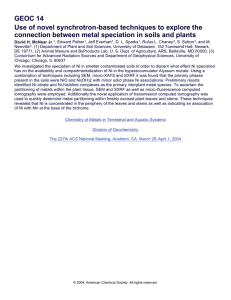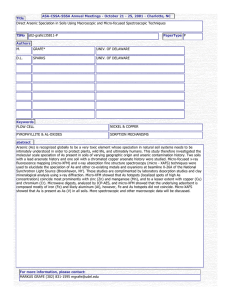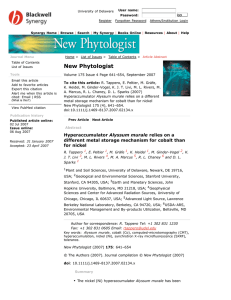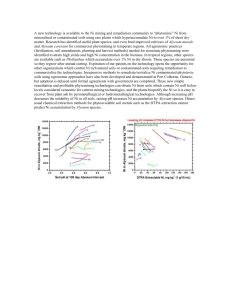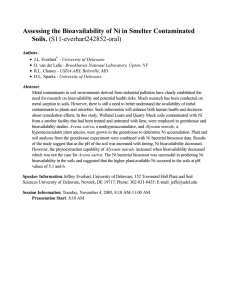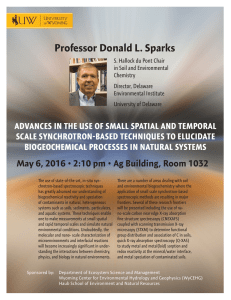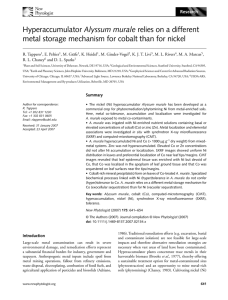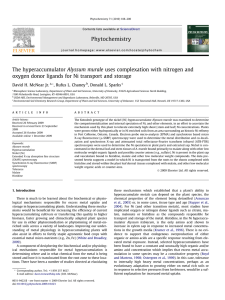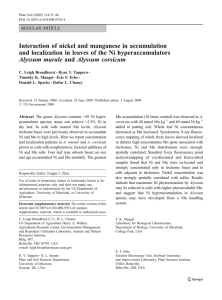11/22/05 1:22 PM
advertisement
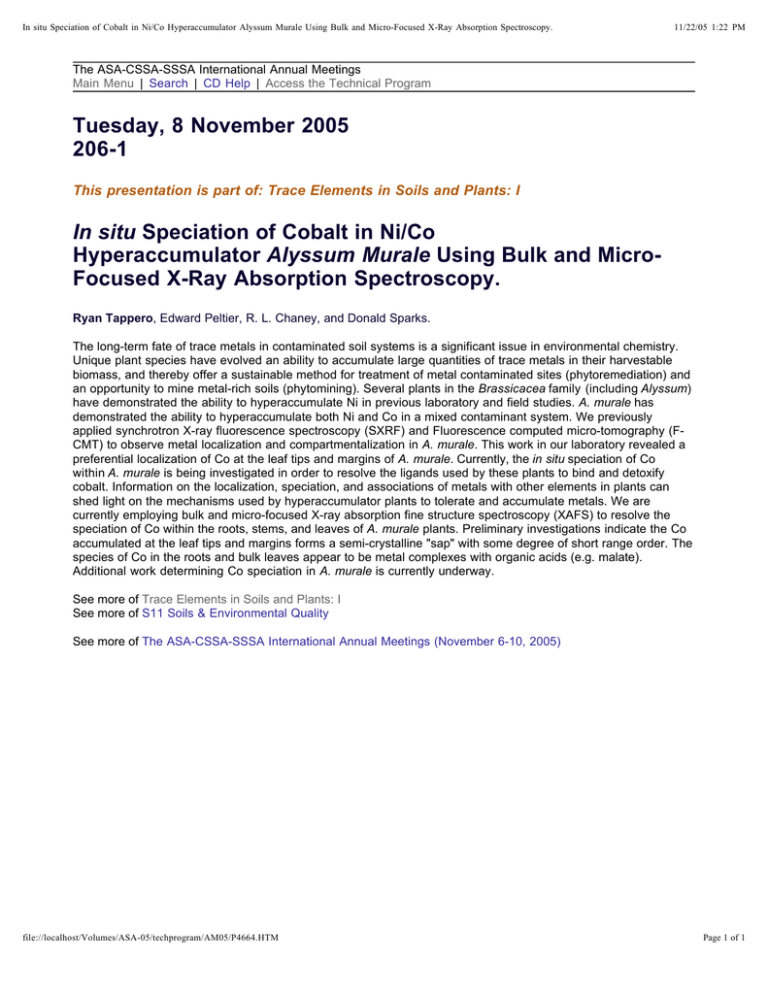
In situ Speciation of Cobalt in Ni/Co Hyperaccumulator Alyssum Murale Using Bulk and Micro-Focused X-Ray Absorption Spectroscopy. 11/22/05 1:22 PM The ASA-CSSA-SSSA International Annual Meetings Main Menu | Search | CD Help | Access the Technical Program Tuesday, 8 November 2005 206-1 This presentation is part of: Trace Elements in Soils and Plants: I In situ Speciation of Cobalt in Ni/Co Hyperaccumulator Alyssum Murale Using Bulk and MicroFocused X-Ray Absorption Spectroscopy. Ryan Tappero, Edward Peltier, R. L. Chaney, and Donald Sparks. The long-term fate of trace metals in contaminated soil systems is a significant issue in environmental chemistry. Unique plant species have evolved an ability to accumulate large quantities of trace metals in their harvestable biomass, and thereby offer a sustainable method for treatment of metal contaminated sites (phytoremediation) and an opportunity to mine metal-rich soils (phytomining). Several plants in the Brassicacea family (including Alyssum) have demonstrated the ability to hyperaccumulate Ni in previous laboratory and field studies. A. murale has demonstrated the ability to hyperaccumulate both Ni and Co in a mixed contaminant system. We previously applied synchrotron X-ray fluorescence spectroscopy (SXRF) and Fluorescence computed micro-tomography (FCMT) to observe metal localization and compartmentalization in A. murale. This work in our laboratory revealed a preferential localization of Co at the leaf tips and margins of A. murale. Currently, the in situ speciation of Co within A. murale is being investigated in order to resolve the ligands used by these plants to bind and detoxify cobalt. Information on the localization, speciation, and associations of metals with other elements in plants can shed light on the mechanisms used by hyperaccumulator plants to tolerate and accumulate metals. We are currently employing bulk and micro-focused X-ray absorption fine structure spectroscopy (XAFS) to resolve the speciation of Co within the roots, stems, and leaves of A. murale plants. Preliminary investigations indicate the Co accumulated at the leaf tips and margins forms a semi-crystalline "sap" with some degree of short range order. The species of Co in the roots and bulk leaves appear to be metal complexes with organic acids (e.g. malate). Additional work determining Co speciation in A. murale is currently underway. See more of Trace Elements in Soils and Plants: I See more of S11 Soils & Environmental Quality See more of The ASA-CSSA-SSSA International Annual Meetings (November 6-10, 2005) file://localhost/Volumes/ASA-05/techprogram/AM05/P4664.HTM Page 1 of 1
